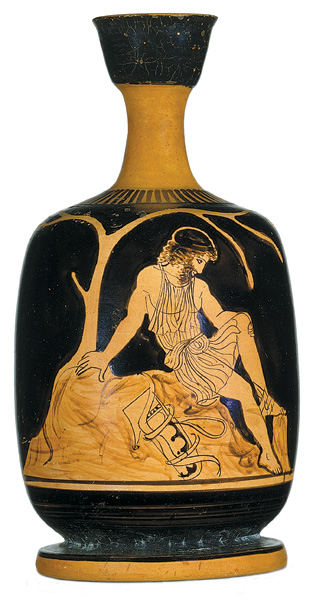Image Details

The Metropolitan Museum of Art, Fletcher Fund, 1956.(56.171.58)
The mythical Greek warrior Philoctetes tends to a wounded foot in this fifth-century B.C. Attic vase painting—suggesting the perils involved in handling biological weapons. On route to Troy, Philoctetes accidentally nicks himself with a poison arrow. His comrades then leave him behind on an island near Lemnos, where his wound continues to fester during the course of the ten-year-long Trojan War. In the Iliad, Homer describes Philoctetes’s wound as “a black flux of blood and matter,” an accurate description of a snakebite.
